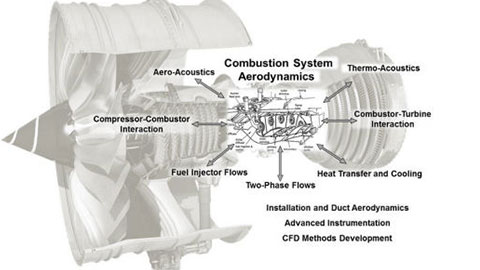Research and facilities
The Loughborough UTC studies all areas relating to the aerothermal processes occurring within gas turbine combustion systems. This is a significant challenge as the combustion system consists of many highly complex components and contains a wide range of complex flow physics.
The primary remit of the UTC is to carry out a coordinated programme of computational and experimental research related to current and future gas-turbine combustion systems (and related components). A particular focus is placed upon design and performance aspects which are influenced by aerodynamic and aerothermal processes. This includes studying the fundamental aerodynamic flows found within various gas turbine components (diffusing flows, wake mixing separated flows, streamline curvature, highly swirling flows, vorticity etc.). It also encompasses the study of flows within more complex engine representative environments considering, for example, the aerodynamic interfaces between the combustion system and its neighboring engine components. Research is also extended to include multi-disciplinary areas where the aerodynamic flow field strongly interacts with, and influences, other processes such as in two-phase flows in the fuel injector, aero acoustic features of the combustion system, combustion instabilities and heat transfer and component cooling. Finally, its experimental and numerical expertise is relevant to a number of other areas with research being undertaken in, for example, compressor transition ducts, fuel pumps, cavitation and fluid hammer.
